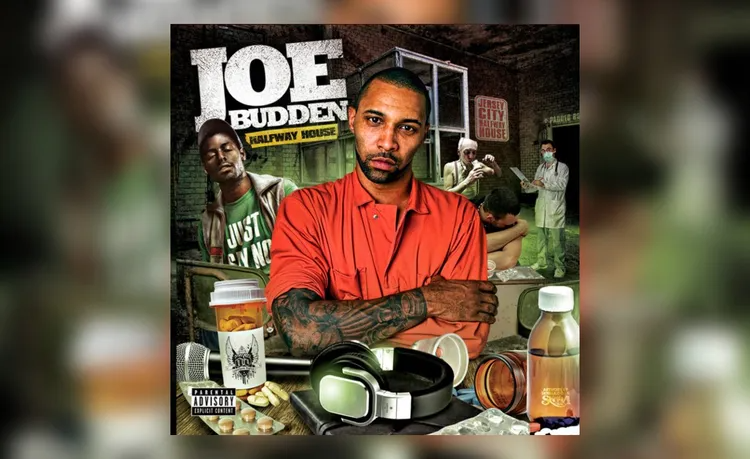
This month marks the 15th anniversary of Joe Budden’s third studio album, Halfway House. It was released on October 28, 2008, via Amalgam Digital. The album was the first installment of a trilogy consisting of Padded Room and Escape Route, Budden’s fourth and fifth albums, respectively. Halfway House was the music industry’s first digital-only hip hop release. At the time, it was a groundbreaking tactic as entirely digital albums have become an industry standard.
Halfway House was also Budden’s first album to enter the Billboard 200 chart in five years since his Def Jam debut. It was his first independent release to do so. An independent project with a unique release strategy and a career-altering posse cut, the rapper-turned-podcaster’s third album solidified his lane. Today, we revisit Joe Budden’s Halfway House for its 15th anniversary.
Following his departure from Def Jam in 2007 and his classic Mood Muzik mixtape series, Joe Budden signed with the Boston-based independent record label Amalgam Digital. His first offering for the label was a 2008 re-release of Mood Muzik 3: For Better or For Worse. The reissue, Mood Muzik 3: The Album, became his second official full-length album. It culminated Budden’s prolific mixtape run that deviated from the radio-friendly sounds of his major label debut. The Mood Muzik series introduced fans to the darker, rugged, and more vulnerable side that built him a devout fanbase.
That same year, Joe Budden released Halfway House, an album that consisted of bar-heavy lyricism like his acclaimed mixtape series. He also found his groove as an independent artist. Songs like “On My Grind” and “Go To Hell” displayed the Budden's charismatic hunger. Halfway House notably marked a shift in Joe Budden’s career as he set out to conquer the independent space within hip hop’s blog era.
The most significant moment of Halfway House is the song “Slaughterhouse.” The 7-minute posse cut saw Joe Budden team up with Royce Da 5’9”, KXNG Crooked, and Joell Ortiz for the very first time. Also featured on the song was Brooklyn rapper Nino Bless. With the exception of Bless, “Slaughterhouse” gave birth to the supergroup of the same name. A major moment for the culture, the four respected lyricists with their own cult followings joined forces to become a hip hop powerhouse. Following their union on Halfway House, the group released their debut album the following year. They eventually signed with Shady Records and released 2012's Welcome to: Our House.
While the group ultimately dissolved over time after various label struggles and Joe Budden’s retirement from rap, Slaughterhouse is still remembered by hardcore hip hop heads as a special collaboration. The birth of Slaughterhouse on Halfway House altered the trajectory of each member’s career. They became a force to be reckoned with the help of Eminem, signifying the Shady 2.0 era. Looking back, Halfway House was a significant moment for Joe Budden’s career as an independent artist, as well as the formation of Slaughterhouse. It set the tone for the next phases of both his solo and collaborative journeys.
Leave a comment